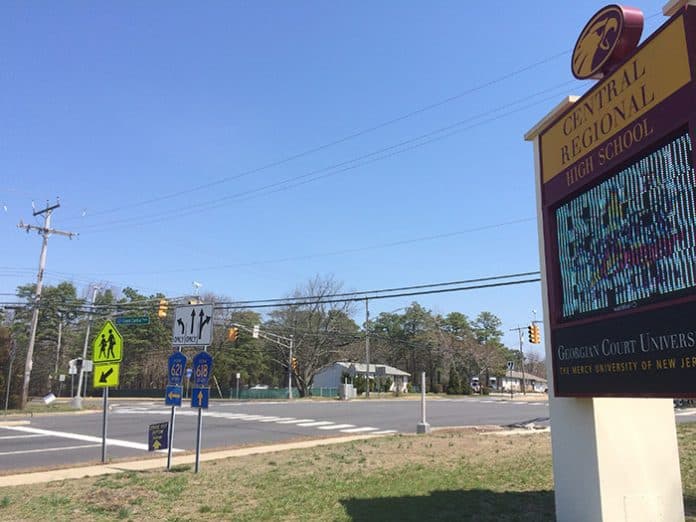
BERKELEY – Few people in the audience at the last Zoning Board meeting wanted a 7-11 to be built across from the Central Regional School District. Even the board members didn’t want it. But they said they were powerless to stop it.
The 7-11 will be built at the intersection of Forest Hills and Grand Central parkways. What makes this application unusual is that it is a commercial building being put onto a residential lot with residential neighbors all around it.
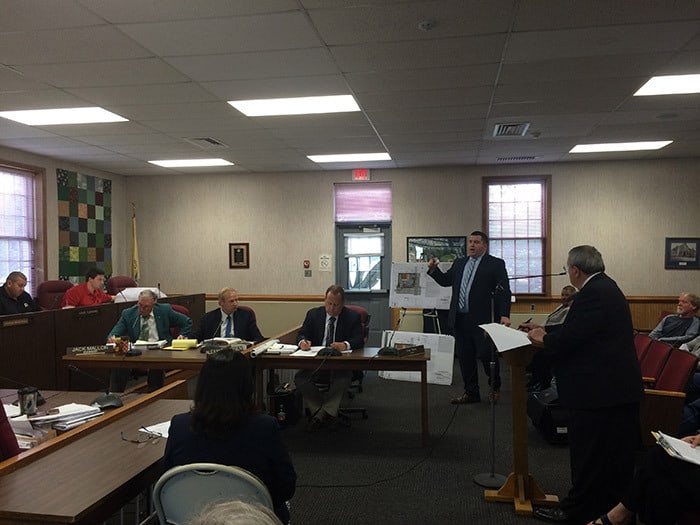
Residents spoke about traffic, fear of kids being struck by cars, and the crime that a convenience store would bring. But now was not the time for that. The board attorney, Alexander Pavliv, told the audience that the store was already approved in December. The meeting was just to hammer out the details.
Some people said they only heard about the 7-11 a week or two ago.
At the public portion of the meeting, residents were angry at the board for having approved this, and questioning if the board had been paid off. Board members responded to their concerns, saying that it’s a volunteer board and none of them are benefitting from this.
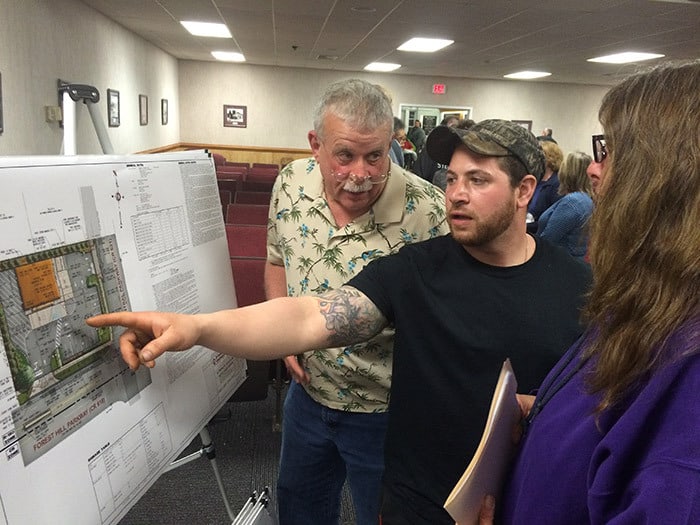
“I voted ‘no’ on it (in December),” said board member John MacMoyle, who lives one mile away from the development. If the board as a whole shot it down, then 7-11 would go over their heads. They would take it to the Superior Court, and eventually win. “We couldn’t stop this if we wanted to. The best we can do is make it fit into the neighborhood. If (a developer) doesn’t like what happens here, (they) go to court and get a decision (they) want.”
Board member Jerome Bollettieri echoed MacMoyle’s statements. If the board denied it, it could go up to the Superior Court and all the safety and security stipulations Berkeley wants would be thrown out.
Therefore, the board set a number of stipulations that 7-11 would have to agree to.
At various times, the applicant’s attorney, H. Alton Neff, would look back into the audience to get a nod of approval of something that 7-11 was OK with. There was also a break at one point, where the applicant’s professionals talked things over with 7-11 officials to make sure the store would accept the board’s regulations and that there wasn’t going to be a dealbreaker.
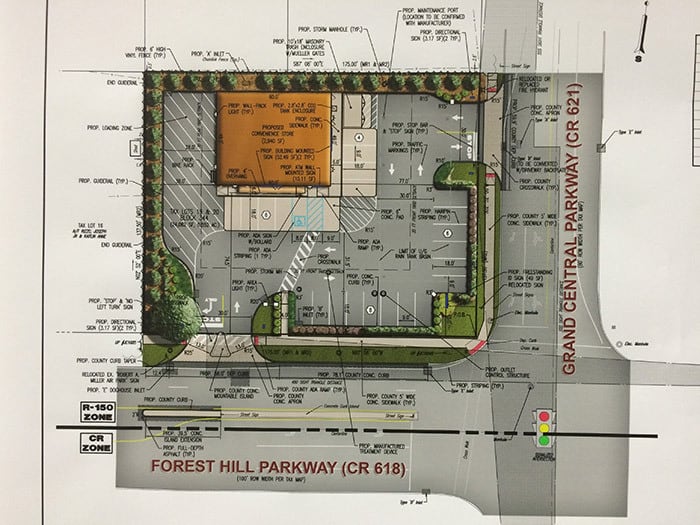
Some of the rules that the board imposed:
- Sound reducing fencing at a higher height than is normally allowed in the area.
- A monument sign like the 7-11 in downtown Toms River, instead of a freestanding sign that would be on a highway. As board engineer Jack Mallon said, the store doesn’t need a huge sign to advertise. People are going to know it’s there. “It cuts down on the commercialization, although that’s hard to do with a 7-11.”
- Tractor trailer deliveries would only be between 9 a.m. and 7 p.m. A window of 2-4 p.m. would also be off limits because that’s when Central students would be getting out of school.
- A rubber mat under the trash so that it makes less noise when the garbage truck lowers the can back down.
- Some of the lights would be shut off at night, but there would be enough for the safety of the property.
These were in addition to other changes 7-11 agreed to prior to the meeting.
There were several stipulations that 7-11 would not agree to. Principal among them was that the board wanted it not to be a 24-hour establishment.
Seaside attempted to limit the hours of a 7-11 and it was struck down, said the attorney, Pavliv.
Additionally, they were not able to regulate the delivery schedule of box trucks, because they are not employees of 7-11.

James Henry, the engineer and planner for the development, said there would be two employees on at a time, three shifts a day over a 24-hour period. He expected two box truck deliveries a week, two a day for soft drinks, and one a day for newspapers. Tractor trailers from the 7-11 company would come one or two a week.
The board and 7-11’s professionals discussed details like landscaping and the number of handicapped parking spaces. The real discussions were about traffic and safety.
Nicholas Verderese, traffic engineer, said the traffic study was done at various times, to record the peak hours of the school, peak summer hours, and for a week in February.
Half of the customers going to a 7-11 are on the way to somewhere already, and the 7-11 just happens to be there, he said. So, half of the customers wouldn’t add traffic to the neighborhood because they were going to be driving down the road anyway.
“It does not have a significant impact on roadways,” he said. “It will not overburden the adjacent roads.”
Board members were concerned that the picture painted by 7-11 was if everything went according to plan. What if the delivery driver doesn’t follow the prescribed route and goes through the neighborhood? What if overflow parking is needed and people fill up the nearby streets?
There are 280 cars leaving Central Regional High School when it dismisses, said board member Lou Tuminaro, who is also the president of Central’s Board of Education. Then, 45 minutes later, the Middle School lets out another 120 cars. The high school kids are beginning drivers. He asked if any of that was factored.
“I don’t think it’s safe enough for the students,” he said. “So, if something happens to a child in the neighborhood, you’re liable?”
Verderese said that 7-11s have been built near schools before but didn’t address the questions specifically.
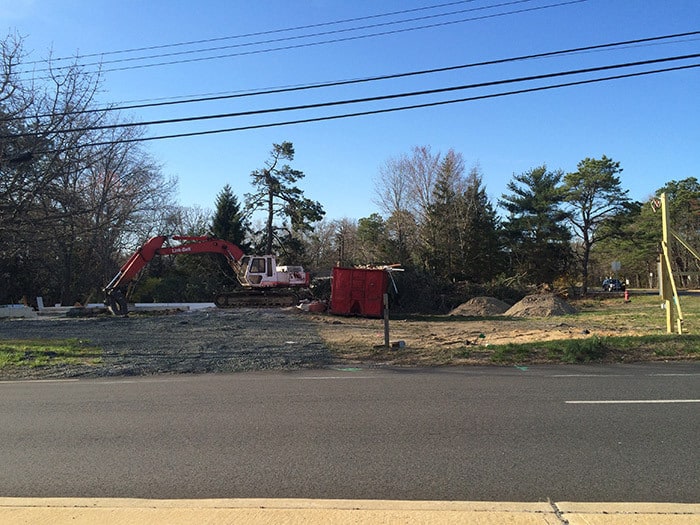
Board members also didn’t believe that there were only seven pedestrians noted at the intersection during the entire week in February that the traffic study was performed.
When it was time for the public to comment, they asked that the application be denied due to safety and quality of life issues. At one point, a resident asked, by a show of hands, how many people in the audience were against it. Most of the three dozen in the audience raised their hands.
Adele Berardi, a high school teacher in another town, said she lives in the curve of the road down the way from the development. When she tells people where she lives, people say ‘oh, the house with the accidents.’ She said this store would add more traffic to an already unsafe road.
Additionally, she asked why there should be a commercial property built in a residential zone when there are a number of empty storefronts on Route 9. “Why put a new store in a town that can’t support it?” She worried that this would lead to a strip of stores on that road.
Jason Mahr is a neighbor and is also a police officer. He said people would be surprised at the amount of crime seen at convenience stores in the middle of the night.
Several people agreed with him. They were worried that people would come off the Garden State Parkway, rob the place, and then jump back on the parkway. Or, they would deliver drugs to a local dealer waiting there.
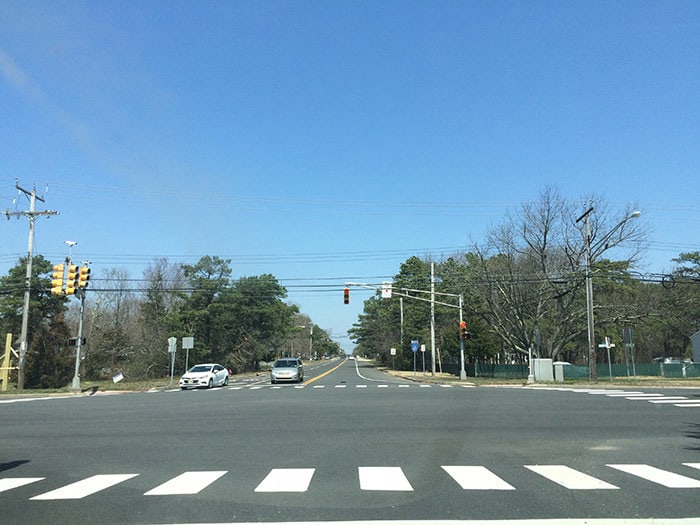
Kate Rizzo, who lives next door, said it takes her five to eight minutes to make a right turn out of her driveway in the morning. She moved there three years ago, knowing it was busy, but expecting that it would always be residential. Now, she’ll have to deal with the noise, the lights, and the trash blowing into her yard.
Denise Ledoux lives immediately behind the property. The store will be 10 feet from her property line. She asked what would happen if there are six cars heading south at the light, trying to make a left, which is common. And then people are coming out of Central, trying to make a left into the 7-11, and everyone gets stuck.
Neighbor Jan Zimmerman said he’s lived on that corner for more than 30 years.
“You guys pushed something through that you shouldn’t have pushed through,” he said. “You’re gonna kill somebody. You can live with that?”
It is expected to be built in 2019.






